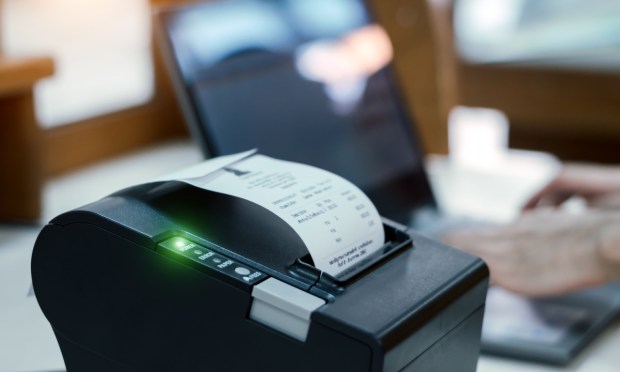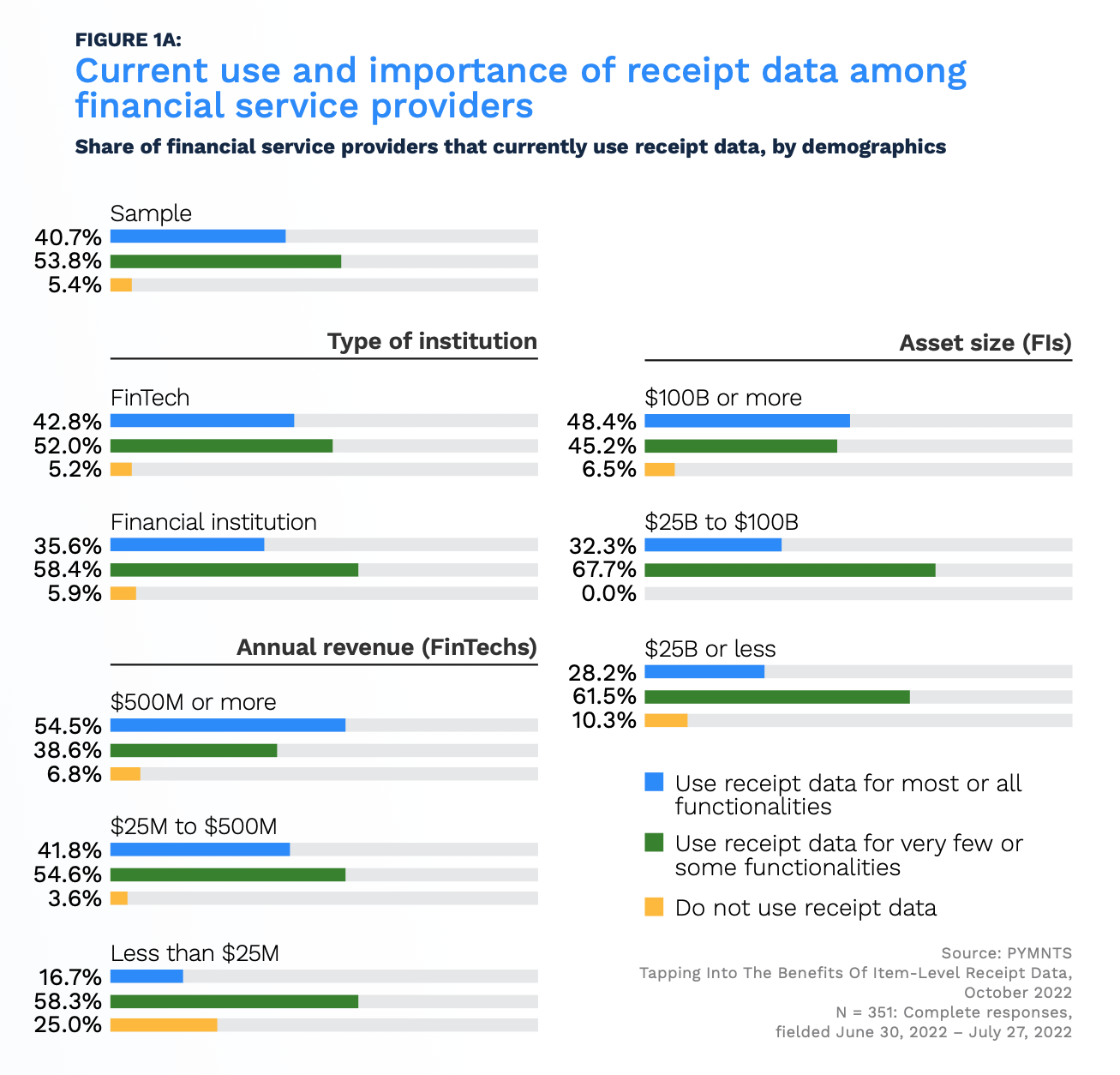95% of Data-Ready FIs and FinTechs Use Item-Level Data in Some Way

When it comes to receipt-level data, the dollars are in the details. That’s one way to summarize the value that item-level data can represent to companies across the business spectrum.
Exploring this in the study “Tapping Into The Benefits Of Item-Level Receipt Data,” a PYMNTS and Banyan collaboration, we found that “the benefits of using receipt data to better engage with consumers and businesses are not lost on the 351 FIs and FinTechs we recently surveyed: 95% use receipt data to support at least some of their operations, with 41% using it to support most or all of their operations. These include functions such as product development, marketing, and fraud prevention.”

Item-level receipt data has manifold uses, from delivering relevant, personalized rewards programs and card-linked offers at a category or product level as banks drive increased spend and top-of-wallet behavior, to helping banks prevent post-purchase chargeback fraud and supporting fraud teams in authorizing good transactions. It can help give consumers a better understanding of their spending behavior, such as correctly identifying food purchases at gas stations over fuel transactions, and streamline expense management in B2B use cases.
Our findings indicate that using receipt data to improve consumers’ understanding of their spending behavior is of most interest to all financial service providers surveyed, followed closely by solutions to prevent fraud. While 45% of firms are very or extremely interested in using receipt data to track consumer spending, 42% are very or extremely interested in using it for fraud solutions.
As the study states, “Nearly half of financial service providers are highly interested in using receipt data to improve consumers’ understanding of their spending behavior. One-third also believe it will support innovation in new customer acquisitions. Fraud prevention is another key application, yet the top two are providing relevant loyalty and shopping offers and streamlining business-to-business (B2B) expense management. Firms very or extremely interested in using receipt data to streamline expense management and loyalty and shopping offerings are the most likely to believe that consumers will switch firms, at 88% and 78%, respectively.”
Get your copy: Tapping Into The Benefits Of Item-Level Receipt Data

